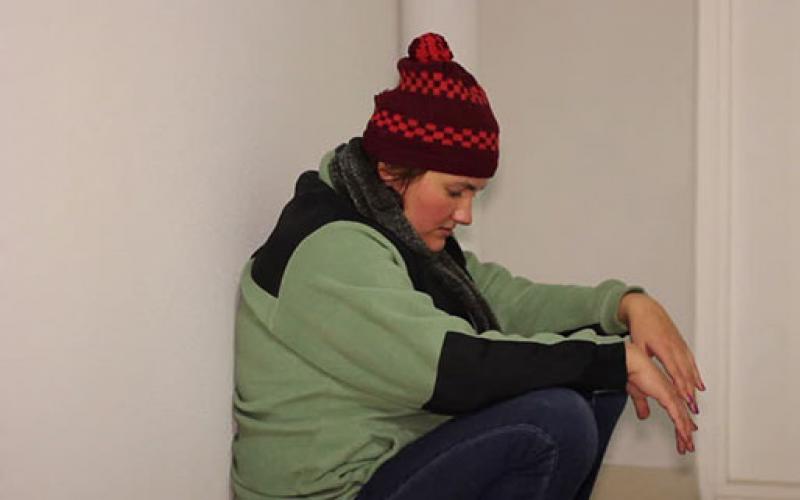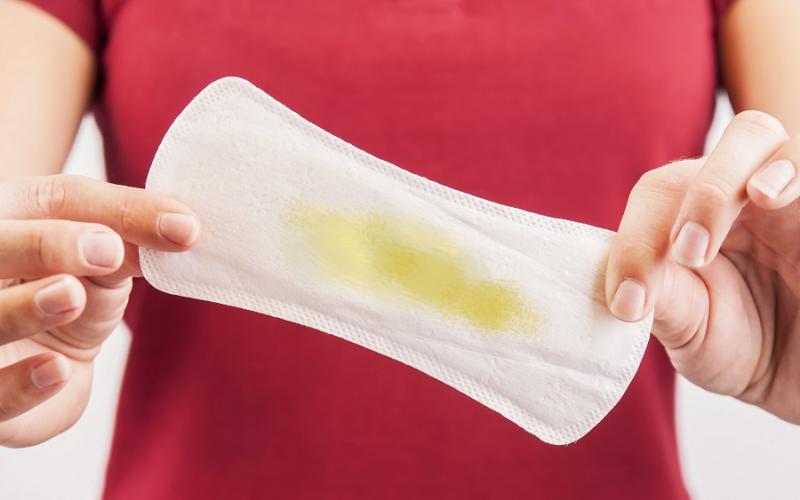Usually people are divided into two categories: berry pickers and mushroom pickers. Our article will be of more interest to the latter, as we will talk about cleaning mushrooms and preparing them for the main cooking process. There is a very large variety of them in the forests of our Motherland, many of them tasty and edible you did not even suspect. Today we will figure out how to properly clean them in order to preserve all the natural benefits and unique taste.
Preliminary cleaning of mushrooms in the forest
It is better to start cleaning mushrooms already in the forest. So you save your home time and protect your forest "catch" from spoilage in the common basket.
How can this be done? After you cut the mushroom with a knife at the very root, leaving the mycelium in the ground, inspect it carefully. Perhaps it is already clear that it is wormy, for example, traces of insects and pests are visible on the cut of the leg. If the hat is eaten away by worms, this is a sign that this one does not suit us.
If the mushroom turned out to be intact, then you need to clean it from forest debris (moss, grass, foliage, needles, earth). To do this, carry a hard brush or sponge with you. Treat the mushroom with it and most of the forest dirt will be removed. The rest can be cleaned at home.
How to clean houses: rules
Cleaning mushrooms is a mandatory process, as by removing forest debris and traces of worms and insects inside, we minimize the risk of poisoning and infection. It is believed that mushrooms are best cleaned within the first five to six hours after picking. During this time, they will not have time to deteriorate. If you do not have time to clean for such a period, put the mushrooms in the refrigerator on the bottom shelf, where the temperature does not rise above 4 degrees. There, putrefactive processes should not develop much, and your “catch” may be saved.
Also, when cleaning a mushroom, we remove its tasteless or inedible parts. For example, for oilers it is a film on the hat, for redheads it is a gray coating on the legs. There are mushrooms that require mandatory washing and soaking in water, this applies to agaric. And spongy (white, red-headed, boletus, and so on), on the contrary, do not like soaking, as they lose their taste in water.
However, the basic rules for cleaning mushrooms are the same for everyone.
- Cleaning the fungus from dry forest debris by scraping with a knife or a stiff brush. This procedure is carried out especially carefully if the mushroom is subsequently prepared for drying.
- Pruning darkened, softened places and areas eaten by worms and insects. Old tubular mushrooms are cleaned from the sponge on the hat. If the leg is viscous and slippery, it is also removed. Butter and russula are cleaned from the film on the hat, as it spoils the taste of the dish, adding bitterness.
- Washing mushrooms. If the mushroom does not go to dry, it is washed. For frying, simply pour over with water. Before cooking, rinse for a maximum of 10 minutes and allow to dry. Lamellar mushrooms contaminated with sand are soaked for several hours.
- Soaking. If the mushroom has a bitter taste, it must be soaked so that the bitterness is gone. The water is changed every two to four hours.
- Heat treatment (boiling, boiling, scalding). Such methods are used if the mushroom has a bitter taste or is slightly poisonous in order to get rid of its toxicity.
The basic principles of cleaning mushrooms can be seen in the following video
How to clean tubular mushrooms
Spongy fungi include:
- White mushroom;
- redheads;
- boletus;
- flywheels;
- polish mushroom and so on.
Such mushrooms are suitable for drying, boiling, frying and pickling.
For drying, choose only clean, untouched by worms. It is not recommended to wash such mushrooms. Carefully remove dirt from the leg and hat with a hard sponge or brush. If the dirt does not rub off, wipe the place of contamination with a damp cloth or cut off with a knife.
If the tubular mushroom is boiled, then it can be washed, but this must be done as quickly as possible so that it does not lose its taste. It is good to use a colander in this case.
Peeled worm mushrooms are still advised to soak in salt water for prevention.
The main algorithm of actions when cleaning:
- remove external contaminants with a brush;
- if necessary, cut out black places with a knife (moves of insects and worms);
- remove the spongy layer under the cap if the mushroom is old. In this case, the sponge contains a lot of overripe spores that are not digested by our body, and the dishes become sticky, which many do not like.
- clean the legs, hats and so on (depending on the specific instance).
We clean white
White mushrooms are the easiest to clean
White mushrooms require minimal cleaning. They are completely edible from head to foot. Clean them up like this:
- cut off the bottom of the leg with a knife, removing the remnants of the mycelium;
- clean with a brush or towel from surface dirt;
- we cut off the hat from the leg, check for worminess inside, if necessary, cut out wormholes and darkening;
- if the mushroom is planned to be boiled in the future, then it can be washed under running water through a colander, removing residual contamination.

Learning to clean redheads
Cleaning redheads differs from cleaning porcini mushrooms only in that it is necessary to walk along the stem of the mushroom with a knife, scraping off the gray outer film. And the rest of the cleaning algorithm is the same.
- We remove surface dirt from the hat and legs with a brush;
- We cut, check for the presence of wormholes, if necessary, cut them out;
- We clean the leg from the outside of the gray film.
- The mushroom is ready for further processing. If this is cooking, then we pre-wash the redheads under running water, preferably as quickly as possible so that the hat does not absorb a lot of moisture.
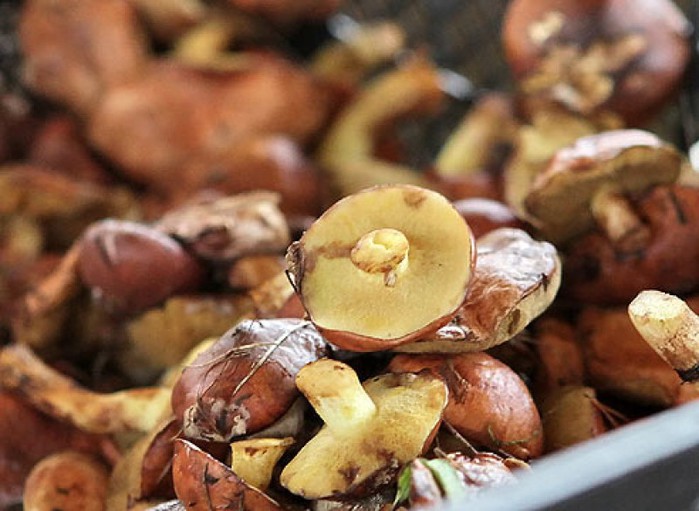
Clean the butterflies: remove the film from the cap
Butter mushrooms are good for drying, frying, and also in pickled form. The main task when cleaning such mushrooms is to remove the film from the hat, which tastes bitter, and even when heat treatment keeps away from the fungus. Do not remove the film only in case of further drying. In other cases, the sticky oily film must be pulled off the oiler. The easiest way is to leave it dry. Therefore, do not wash or soak the oil before cleaning the film. Another pitfall in oil cleansing is an indelible dark coating on the hands. There are two options to prevent it:
- Constantly during cleaning, oil is washed off with clean water that has not yet dried sticky dirt from the film;
- Grease your hands and knife vegetable oil, then the plaque will not stick to the hands.
If the dirt after cleaning the oiler is already on your hands, do not rub it with soap, it will eat into the skin of your hands even more firmly. Better use vinegar or citric acid. You may not erase all the plaque, but make it not so bright.
Action algorithm:
- Clean the oil can from surface dirt in a dry way (with a brush or a hard sponge);
- Using a knife, pick up the film from the cap of the mushroom and pull it. If the oiler is small and dry, the film can be easily removed. If the cap is large, then the film on it is quite thin and more difficult to remove. In order to remove the film from a wide hat, break it in half and pull the film from the center of the break, so it will come off quickly and easily. From very small butter, the caps of which are still fused with the legs with a membrane, the film is removed with a knife along with the membrane.
- If the butternuts are not cooked to dry, rinse them under running water in a colander.
Kozlyak

Goat mushroom is a close relative of butterdish
Goat fungus is a very close relative of butterdish. They have similar taste qualities, but it is believed that the goat is inferior to the butterdish. However, it is not so easy to distinguish a goat from a butter dish in finished form. The goat's hat is not so sticky and dirty, it does not require long-term cleaning. The hat does not need to be peeled.
Goat cleaning steps:
- cleared of forest debris;
- We remove wormholes with a knife;
- rinse with running water.
It is very good for drying, in this case the goats are not washed.
Mokhoviki
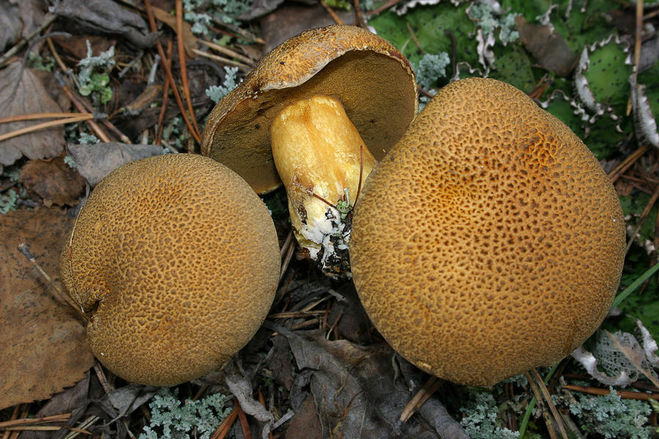
We clean the flywheel mushroom: remove the spongy bottom layer from the cap
The flywheel mushroom is relatively easy to clean. The porous bottom layer, which turns black during cooking, is removed from the hat, the darkened legs are cleaned and hard places are removed. It is not necessary to remove the film from the hat.
The main points of cleaning the flywheel:
- Dry surface brushing;
- Cleansing inside from wormholes and darkening;
- Removing the spongy layer from the cap;
- Rinse with running water or soak for 5-10 minutes. If it goes to dry - no need to wash!
We clean the Polish mushroom

The Polish mushroom is a close relative of the flywheel
The Polish mushroom is a close relative of the flywheel, in terms of nutritional and useful properties close to white. Considered one of best mushrooms for frying. It can also be dried and boiled. Such a mushroom does not need special cleaning, it is enough to remove surface dirt, the remains of the mycelium on the leg below and check for worminess. Then it is washed and cut for further preparation.
How to clean plate
Main problem agaric is the difficulty of cleaning them from forest debris and sand and the bitter taste of some species that have milk. Usually these issues are resolved by soaking or boiling. In this case, the bitterness and most of the dirt becomes easier to remove, and the sand settles to the bottom of the basin or pan.

Mushroom mushroom - a real delicacy
Ryzhik has a wonderful very bright taste. It is boiled, fried, salted and marinated. If you break the saffron milk cap, bright orange juice will come out, thus distinguishing them from poisonous counterparts. This mushroom is considered a delicacy among gourmets and a great success among mushroom pickers. A day after salting, mushrooms can already be served on the table, seasoned with vegetable oil. Mushrooms are washed under running water, soaked in warm water for several hours. After soaking, they are cleaned of darkened places and proceed to direct cooking.
Russula

We clean russula
Russula belong to agaric mushrooms. They are salted, fried, pickled or boiled. Some types of russula have a bitter taste due to the film on the cap. Therefore, the film is carefully picked up with a knife and removed from the edge to the center. It is often difficult to remove the film in the middle, leave it as it is, otherwise the fragile hat will crumble. Due to their fragility, such mushrooms are often subjected to heat treatment, after which they become more elastic and elastic and are ready for pickling.
The algorithm for cleaning russula is as follows:
- Clean the legs with a brush and a knife from forest dirt, carefully remove dirt from the plates under the cap.
- Remove the skin from the cap;
- Rinse and soak to remove bitterness;
- Scald clean mushrooms in a colander and dip in boiling water for just a few seconds.

Chanterelles require careful cleaning
Chanterelles do not have a bitter taste and are considered a delicacy. They do not require soaking, but are washed with running water. In the process, you can use a brush. Very carefully you need to transfer such mushrooms from the basket to the sink, as they are very fragile. In the forest, remove forest debris from them and trim the leg. This will save you time at home.

Oyster mushrooms are washed under running water
Oyster mushrooms grow more often on stumps and fallen trees. They do not have dangerous counterparts and it is impossible to poison them. Mushrooms are easy to clean, as they usually do not have strong contaminants. They, like chanterelles, have enough running water. It remains only in the forest to remove surface dirt from hats and legs.
Rows and blue legs

Rows must be boiled before cooking
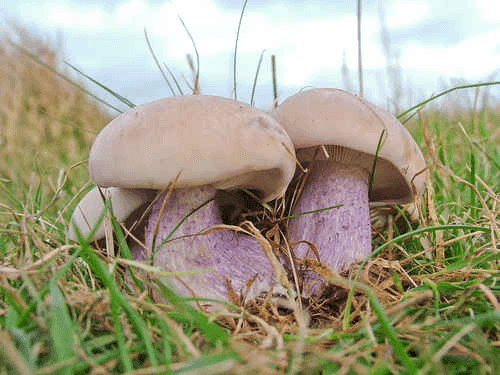
Blue-footed close relatives with rowing
Rows and blue legs are cleaned similarly to oyster mushrooms, however, it happens that a lot of dirt accumulates on the hats of rows. In order not to clean off the dirt, mushroom pickers prefer to remove the skin from the row cap, especially since it is easily removed. Rows in the forest are cleared of dirt with a knife. At home, bad places on the mushroom are cleaned with a knife, washed under running water and boiled. Boiled rows can later be pickled or salted. Blue-footed and rowing have an anise flavor, which only intensifies during heat treatment.
Sandboxers

Sandbox mushrooms are soaked from sand and boiled
Sandpiper mushroom is not easy to find, it can hide from us under a layer of needles. They grow in groups, so they are easy to collect. The main problem in cleaning the sandbox is a large number of sand, which must be washed from the inside before cooking. Therefore, the algorithm for cleaning the sandbox is as follows:
- Rinse each mushroom thoroughly under running water;
- Soak in cold water for at least three to four hours. In the water at the sandbox, pores will open, from which sand will come out and settle at the bottom of the vessel;
- Boil for 15-20 minutes in boiling water.
Now the sandboxes are ready for cooking.
We clean the raincoat mushroom

Puffball mushroom is a close relative of champignon
The puffball mushroom is a relative of the champignon. It can be fried, cooked from it soup, it does not require pre-heat treatment.
Raincoat cleaning algorithm:
- Each mushroom must be washed under running water, it is easy to remove the top layer with your fingers. If the mushroom is already mature, then the top is removed like a shell.
- The washed ones are cut and checked for freshness and purity. The inside of the raincoat should be white or cream.
If the raincoat is black or brown inside, it is damaged. The same can be said if it has a mushy consistency.
hedgehog
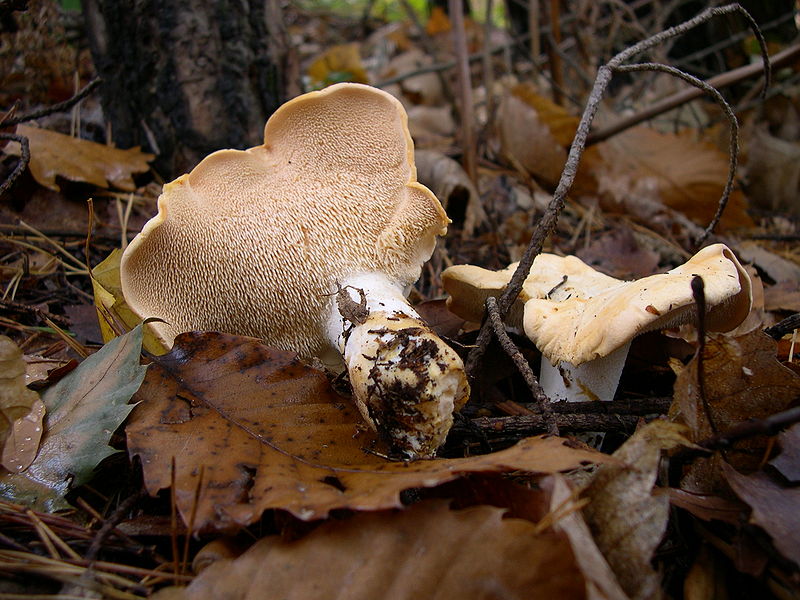
Hedgehog has a unique taste, which is very much appreciated in France.
Hedgehog mushroom at a young age does not require pre-soaking and cooking, as it does not have a bitter aftertaste. Those who do not like a mushroom dish similar to porridge need to cut off all the “needles” from the bottom of the hat, which gave the prickly name. Knowledgeable mushroom pickers advise taking only young hedgehogs, they can simply be washed under running water, cleaned of wormholes and put into cooking. If you use mature specimens for cooking, then such mushrooms need to be pre-heated to remove excessive rigidity.
There are a huge number of recipes for cooking mushrooms of various types. However, not everywhere it is described how to prepare them for the main use. The cleaning step is very important. How you spend it depends on the health of your body and the taste of the resulting dish. In cooking, be careful, do not ignore the basic mandatory steps for cleaning them. We hope your dish will be above all praise! Bon appetit and stay healthy!
Before you start turning mushrooms you picked in the forest into a regular salad or gourmet sauce, they need to be thoroughly and properly cleaned.
When to clean mushrooms
Start cleaning mushrooms immediately, immediately upon returning from the forest. Do not postpone this event for later, because it is much easier to get poisoned with old mushrooms, and cut mushrooms deteriorate much faster, since worms quickly crawl from eaten mushrooms to whole and intact ones. After all, fresh mushrooms just taste better.
How to clean
To clean mushrooms from sand and vegetation artifacts adhering to them, a hard brush, a thick, rough towel, or a dishwashing sponge (its hard side) are usually used. And it is most convenient to scrape the legs of mushrooms with a small knife, which is called mushroom.
To wet or not to wet?
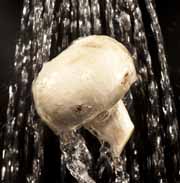 Never soak mushrooms before cleaning. Wet and slippery mushrooms are much more difficult to hold in your hands, and the caps of tubular mushrooms, having been saturated with water, like a sponge, will lose their taste, become heavy, loose and fall apart in your hands.
Never soak mushrooms before cleaning. Wet and slippery mushrooms are much more difficult to hold in your hands, and the caps of tubular mushrooms, having been saturated with water, like a sponge, will lose their taste, become heavy, loose and fall apart in your hands.
Greenfinch mushrooms are an exception to the rule. If they are soaked for an hour or two in water before cleaning, the sand in which they usually grow, and which is very difficult to remove from their dry surface, will simply separate under the influence of water and settle on the bottom of the dish.
Hat cleaning
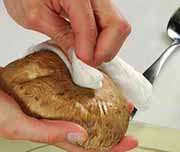 Different types of mushrooms are cleaned in different ways. In agaric mushrooms, especially russula, it is necessary to remove the skin from the cap, otherwise the mushrooms will be bitter.
Different types of mushrooms are cleaned in different ways. In agaric mushrooms, especially russula, it is necessary to remove the skin from the cap, otherwise the mushrooms will be bitter.
At the same time, you should not reach fanaticism: picking up the skin with the tip of a knife, remove it in a circle from the outside of the cap - and that's enough, it is not necessary to scrape off the skin from the central part of the mushroom cap.
Caps of tubular mushrooms (porcini, Polish, boletus, boletus and others) are enough to be cleaned of grains of sand, leaves, needles and other small debris adhering to them. But in butter, the sticky and slippery skin must be removed from the hat, otherwise the dish prepared from them will be incredibly bitter.
Feet cleaning
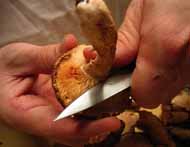 Move on to the legs of the mushrooms. Regardless of the type of mushroom, it is necessary to remove the remains of the mycelium and sand from the stem, cut off the wormy fragments, and for mushrooms with pockmarked legs (white, boletus, mossiness mushrooms and others), it is advisable to scrape the leg with a knife.
Move on to the legs of the mushrooms. Regardless of the type of mushroom, it is necessary to remove the remains of the mycelium and sand from the stem, cut off the wormy fragments, and for mushrooms with pockmarked legs (white, boletus, mossiness mushrooms and others), it is advisable to scrape the leg with a knife.
In honey mushrooms and champignons, it is necessary to remove the skirts that give off bitterness from the legs, and in umbrella mushrooms, the legs can be cut off without regret at all, since they are hollow inside and there is practically nothing to profit from there. Puffball mushrooms will have to peel off the scales and remove the top layer of their shell.
For many people picking forest mushrooms brings great pleasure. In the midst of mushroom season, in the forest you can not only have a good time, but also collect an excellent "harvest" of mushrooms.
Preparing mushrooms for cleaning
How to clean mushrooms? Before you start cleaning, mushrooms need to be sorted out, dividing them by type. Each type of mushroom requires special attention and they are cleaned in different ways. Mushrooms tend to deteriorate quickly, some of them can become dark and even blue in time, so cleaning and preparing mushrooms for further processing should not be postponed for a long time.
Do not try to immediately wash the mushrooms if they are wet, this will make the cleaning process much more difficult, since the mushroom caps become very slippery when wet. To begin with, you should, if possible, remove forest debris, such as spruce needles, dry leaves, moss.
Before you start cleaning, prepare everything you need for this. First of all, this is a knife, which should be of medium size so that it is easy for you to handle it, as well as a brush or brush for cleaning hats. You also need a trash can, a bag or any container where you can dump waste. And, most importantly, a container in which it will be possible to put peeled mushrooms for washing and a container for clean mushrooms. It depends on the types of mushrooms, as some of them need to be soaked in salted water before further processing. Of course, it is better to wash the mushrooms under running water, but if there are a large number of them, a bowl, basin, bath or a large saucepan will do, in which it will be necessary to change the water, depending on the degree of contamination.
It is necessary to start cleaning by cutting off dark or damaged areas, as well as checking the fungus for the presence of worms or other insects in it. If the mushroom is completely eaten by worms, it is better to throw it away.
How to clean forest mushrooms
Porcini mushrooms, boletus and boletus are cleaned in the same way: the hats are cleaned with a brush or brush, the tip of the leg is cut off, the leg itself can not be cleaned.
Butterfish are a little more difficult to clean: you need to carefully remove the film from the mushroom cap, which will be easier to do with the tip of a knife, then lightly clean the leg. The film from the hat can stain hands and nails, which will be difficult to wash, so it is better to prepare a pair of rubber gloves for cleaning the oil.
Cleaning honey agarics is the easiest to carry out, since it is only necessary to remove the film under the hat.
Chanterelles are not cleaned at all, except that dark or spoiled edges are cut off. It is enough to rinse them thoroughly with water, especially from the side of the grill, and wipe the top of the hat with your hand.
How to clean greenhouse mushrooms
Among many people, there is an opinion that champignon mushrooms do not need to be cleaned, because they are grown artificially in the beds. But, one way or another, it is better to clean. To do this, pour the champignons into the sink, and rinsing them under running water, rub the cap of each mushroom with your hand. From this, the extra films will come off. You can also use a washcloth or brush.
Oyster mushrooms are easier to clean: you need to rinse them thoroughly under running water, and then cut off damaged, darkened or uneven edges.
After cleaning, the mushrooms should be washed again, but this must be done quickly, because if the mushrooms absorb a lot of moisture, this can noticeably affect the taste.
This completes the cleaning of the mushrooms, and you can immediately start cooking, salting or pickling.
Usually, future housewives receive knowledge on how to clean porcini mushrooms from their grandmothers and mothers. And not always the information is correct and reliable. Therefore, we propose to learn how to properly clean porcini mushrooms in accordance with the canons of culinary technology. This information will give you the right idea on how to clean the white mushroom at home in such a way that there is as little waste as possible and as much recyclable raw materials as possible. The first thing to remember is that the processing of mushrooms should begin immediately after they are collected in the forest. Before peeling fresh porcini mushrooms, prepare several bowls. Fill one of them with warm water. Another should be adapted for cutting mushrooms. The third one is for waste.
How to clean a white mushroom cap
 Fresh mushrooms are stored for a short time, therefore, within 3–4 hours after collection, they must be processed - sorted and prepared for canning or used for cooking. mushroom dishes. If it is not possible to process the mushrooms right away, transfer them to an enamel bowl without a lid and store in the refrigerator for 1-2 days. At the same time, they should be shaken and shifted as little as possible and picked up carefully so as not to leave dark spots and dents. Preparation of mushrooms for culinary processing consists in cleaning from debris (adhering blades of grass and insects), removing darkened or damaged areas.
Fresh mushrooms are stored for a short time, therefore, within 3–4 hours after collection, they must be processed - sorted and prepared for canning or used for cooking. mushroom dishes. If it is not possible to process the mushrooms right away, transfer them to an enamel bowl without a lid and store in the refrigerator for 1-2 days. At the same time, they should be shaken and shifted as little as possible and picked up carefully so as not to leave dark spots and dents. Preparation of mushrooms for culinary processing consists in cleaning from debris (adhering blades of grass and insects), removing darkened or damaged areas.
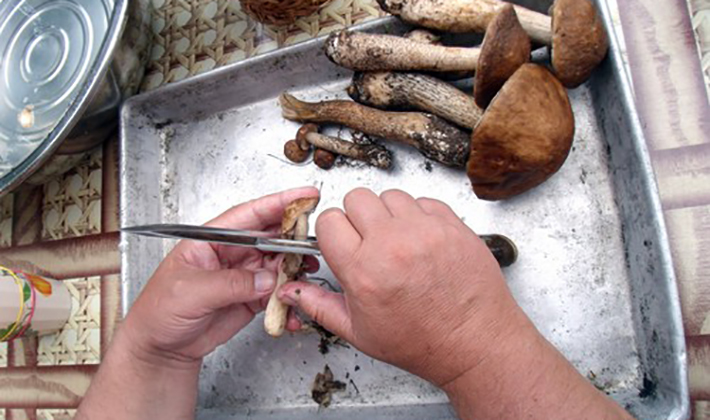
Before cleaning the cap of the porcini mushroom, it is cleaned with a knife with a stainless steel blade or a soft cloth. The cut on the legs is updated by removing the most contaminated part. If the mushrooms from the forest are heavily polluted, they are soaked in water and pressed down with a weight for complete immersion. After 10–20 minutes, the caps are already easily washed from adhering grass and leaves. You should not leave the mushrooms in the water for a long time, as they will actively absorb it, which will eventually negatively affect their taste and aroma, and make the caps brittle. Then the mushrooms are washed with clean running water. Particular attention is paid to washing the lower surface of the mushroom caps, which is spongy or lamellar, and therefore most susceptible to contamination. Then the mushrooms are left in a colander or sieve to drain the liquid. The exception is mushrooms intended for drying and sometimes freezing. They are only cleaned, but not washed with water, much less soaked.
See how to clean the porcini mushroom in the photo, which shows the whole process step by step.


How to clean white mushroom
Porcini mushrooms intended for canning in hermetically sealed containers are also sorted by color or by place of growth: spruce, pine, oak, birch mushrooms. In accordance with the distribution by variety, the leg is also cut. The skin from the remaining stump at the cap is scraped off with a knife. In addition, mushrooms are thoroughly cleaned of adhering debris, needles, twigs, particles of earth, and all wormy specimens are discarded. Wormholes are cut out of less wormy ones. Mushrooms intended for drying are finally cleaned with a wet cloth, and the rest are washed.An important step is sorting and cleaning. For pickling in a hermetically sealed container, only a mushroom cap is taken.
How to clean porcini mushrooms before freezing
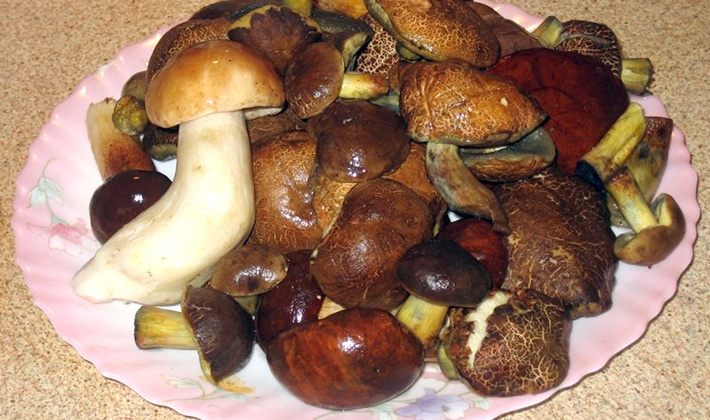 Washing is the most important process preparatory work. The quality of finished products depends on its thoroughness. Therefore, special attention should be paid to washing, taking into account at the same time that a loss of aromatic and soluble solids occurs during prolonged washing. Therefore, the washing time must be limited.
Washing is the most important process preparatory work. The quality of finished products depends on its thoroughness. Therefore, special attention should be paid to washing, taking into account at the same time that a loss of aromatic and soluble solids occurs during prolonged washing. Therefore, the washing time must be limited.
You can wash the mushrooms well without loss for 10 minutes, while changing the water several times. It is best to wash the mushrooms in running and continuously changing water, especially with a pressure jet. Before peeling porcini mushrooms before freezing, note that if mushrooms are excessively soaked in water, this indicates that they are overgrown or damaged. During the decay process, substances harmful to health, such as the poison neurin, can be formed, as a result of which edible mushrooms may become poisonous. It is impossible to pull mushrooms out of the ground, because in this case the structure of the mycelium is disturbed, after which the threads of the mushroom mycelium die off and do not bear fruit. Mushrooms must be carefully cut with a knife.
 After cutting the mushroom, check if it is wormy. In addition, by cutting the mushrooms with a knife, we reduce the possibility of their contamination with adhering earth. The collected mushrooms are immediately cleaned of the earth adhering to them, leaves, needles, grass and other debris; remove parts affected by insect larvae. Heavily contaminated lower parts of the legs are cut off. It is more correct to put the mushrooms in the basket with the hats down - this way they are better preserved.
After cutting the mushroom, check if it is wormy. In addition, by cutting the mushrooms with a knife, we reduce the possibility of their contamination with adhering earth. The collected mushrooms are immediately cleaned of the earth adhering to them, leaves, needles, grass and other debris; remove parts affected by insect larvae. Heavily contaminated lower parts of the legs are cut off. It is more correct to put the mushrooms in the basket with the hats down - this way they are better preserved.
See how to clean porcini mushrooms before cooking in the photo showing the intricacies of this process.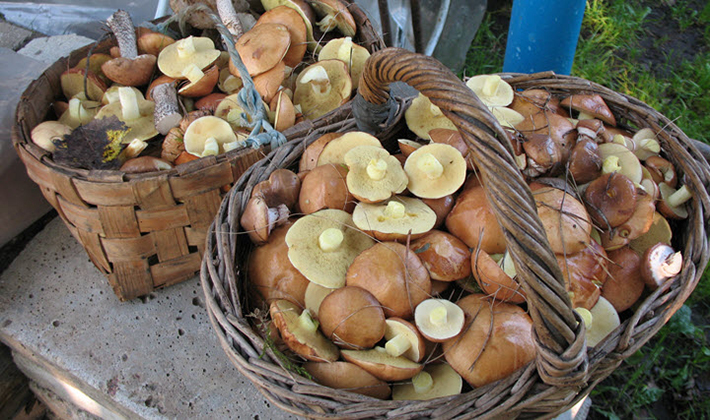
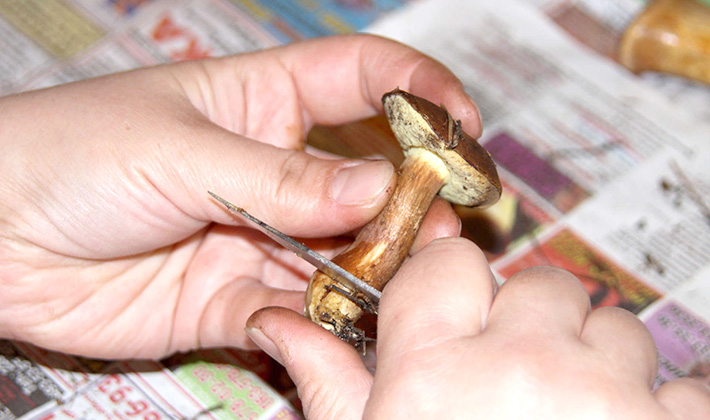
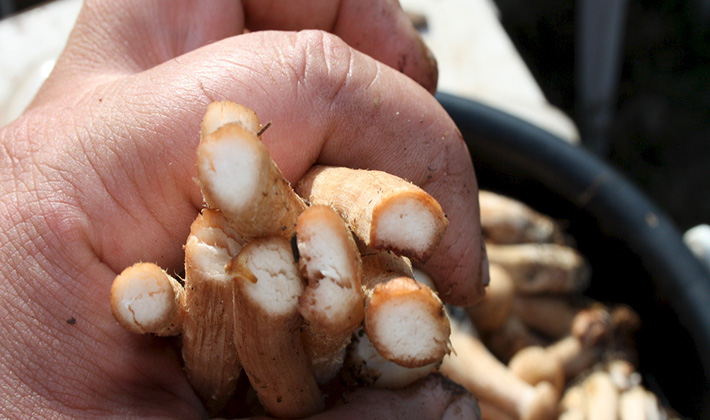
Cleaning porcini mushrooms before drying.
Drying is one of the simplest mushroom processing methods. Ceps (porcini mushrooms) are most suitable for drying. Mushrooms are carefully examined, cleaned with a knife from moss, leaves, needles and other forest debris. They discard randomly collected inedible and wormy ones, cut out the damaged parts, separate the caps from the legs, if the skin is easily separated from the pulp, it is removed. Wipe mushrooms with a dry or damp cloth. They don't wash. After that, thick legs are cut across into circles up to 3 centimeters thick, and thin ones along, into two or four parts.
How to clean porcini mushrooms for freezing
Then we cut off everything superfluous from the mushrooms. We cut large mushrooms into pieces, and leave small ones whole. Then we put the mushrooms in a colander and leave it like that for several hours. Mushrooms must be dry. We put the mushrooms in bags or containers. We freeze and store at a temperature of -18 to -23 ° C.
How to clean porcini mushrooms before frying
 Many housewives really like frozen fried mushrooms: they have the same taste and aroma, nutritional and vitamin properties as fresh ones. That is why in Lately, with the advent of new and improved types of refrigerators and freezers, this harvesting method has become very common.
Many housewives really like frozen fried mushrooms: they have the same taste and aroma, nutritional and vitamin properties as fresh ones. That is why in Lately, with the advent of new and improved types of refrigerators and freezers, this harvesting method has become very common.
Before frying, you need to know how to clean porcini mushrooms before frying: free them from earthy lumps, herbs, remove the legs in some species, rinse several times in cold water, and after completing this, dry it, spreading it on a towel, preferably outdoors .
Watch how to properly clean porcini mushrooms in the video, which illustrates the whole technology step by step.





